- Beauty
I'm sure we all know that we live in a very empty universe, but how empty is it? In fact, the universe is more empty than you can possibly imagine. To illustrate just how empty the universe is, let's start with the earth and the moon, where we would normally imagine the earth-moon system as follows
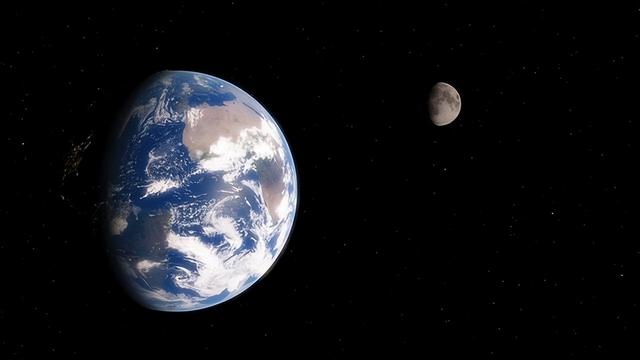
But in reality this is not the case, because the average distance between the earth and the moon is about 380,000 km, while the radius of the earth is about 6371 km and the radius of the moon is about 1737 km, so the real situation of the earth and the moon should look like this
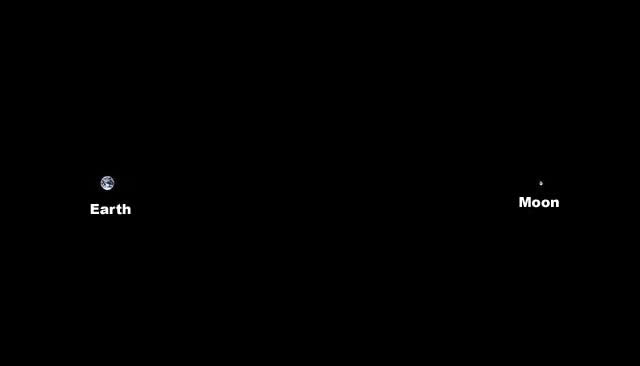
As you can see, there is a much emptier space between the earth and the moon than one might think, so what can be put down in this space?

Yes, just between the earth and the moon, one could put down all the planets in the solar system except for the earth. With the earth-moon system out of the way, let's take a look at the solar system, starting with the diagram.
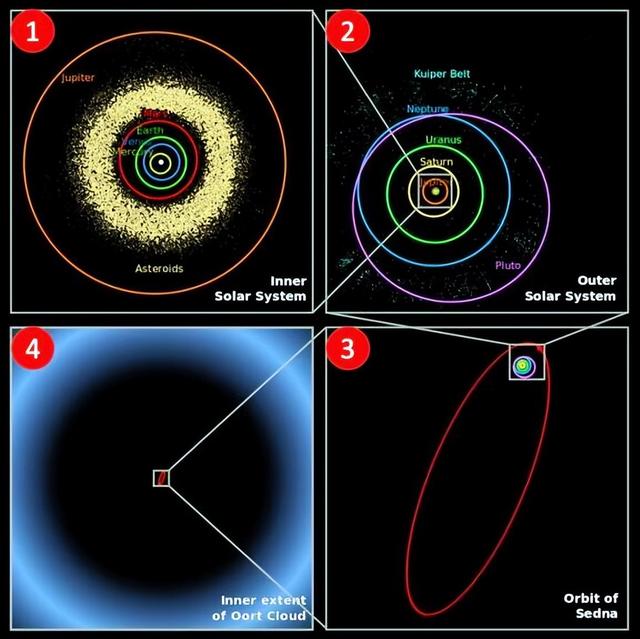
Starting from the top left, in clockwise order, the outermost part of this diagram is the orbit of jupiter in part 1, the outermost part of part 2 is the orbit of pluto and the kuiper belt, and the outermost red orbit in part 3 belongs to the asteroid sedna, whose perihelion is about 76 astronomical units from the sun and aphelion is about 937 astronomical units from the sun.
The outermost part of part 4 is the otter nebula, whose inner edge is between 2000 and 5000 astronomical units from the sun, and whose outer edge is about 1 light-year away from the sun, beyond which it can be considered to have flown out of the solar system.
It is important to know that the sun accounts for about 99.86% of the mass of our solar system, and the majority of the remaining mass is occupied by the eight planets and their moons. Even in the "Dense" Asteroid belt, the average distance between small bodies is about 770,000 km (much further than the earth-moon distance).

Having seen this, i believe you have a concrete idea of the emptiness of our solar system, so let's look at the milky way.
The stars in the milky way are very unevenly distributed, as evidenced by the fact that the further away from the centre of the galaxy, the lower the density of stars becomes, with a maximum of 289,000 stars per cubic light year in the core of the galaxy, while at a 100 second gap (about 326 light years) from the centre of the galaxy, the density drops to 2.9 stars per cubic light year.
By the time we get to the region where our solar system is located, the stellar density has dropped to 0.004 stars per cubic light year, and at the edge of the galaxy, the stellar density is even lower at 0.0003 stars per cubic light year, which, taken together, gives an average density of about 0.006 stars per cubic light year for the entire galaxy, which means that there is roughly one star every 167 cubic light years in the galaxy, and the average distance between stars and the average distance between stars is about 5.5 light-years.
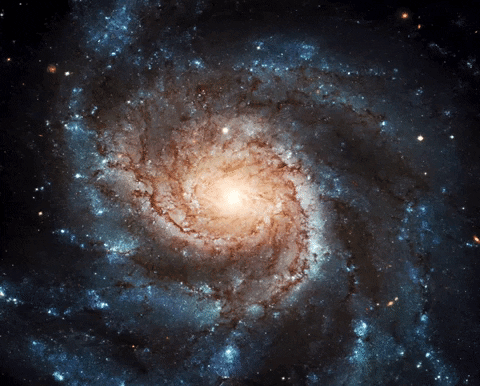
For the sake of understanding the emptiness of the milky way, let us assume that there are two stars as large as the sun, with a distance of 5.5 light years between them. The distance between the two "Soccer balls" Would be about 8223 kilometres.
Observations show that other galaxies in the universe are about as empty as the milky way and, more importantly, that the distances between galaxies in the universe are often hundreds of thousands or millions of light years, and that the vast space between galaxies is so sparse that there is almost nothing.

In addition, there are many "Cosmic voids" In the universe, where galaxies are rare or non-existent.
These 'voids' are often very large in span, and some are even larger than you can imagine, such as a 250-million-light-year diameter 'shepherd's hollow' in the direction of the constellation shepherd, about 700 million light-years from earth. "Shepherd's hollow", which spans about 0.26% of the entire observable universe.

The already sparse distribution of galaxies in the universe is further increased by the existence of 'cosmic voids', and as mentioned above, the galaxies themselves are very empty, which, when added together, makes the universe ridiculously empty.
In theory, all we need to do is measure the volume and mass of the universe to calculate the matter density of the universe, but obviously we cannot do that, so we have to settle for the next best thing. See what the matter density of the observable universe really is.
At the macroscopic level, the matter of the observable universe is uniformly distributed throughout, and since the volume of the observable universe is known, it is only necessary to measure the mass of a part of it to estimate the matter density of the entire observable universe, which is what scientists have done in the past to estimate the matter density of the observable universe, i.e., about 6 mass of a proton.
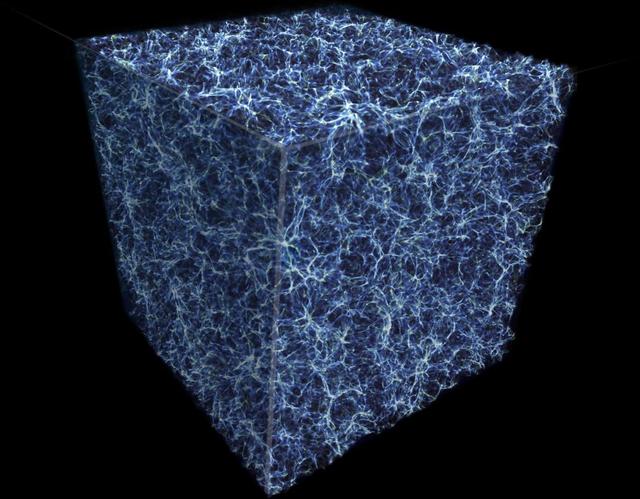
What is this concept? Let's say that there is a square box with a prism length of 1 metre containing 6 protons, and we now enlarge the box to the size of a common glass marble (about 1.5 cm in diameter), then the prism length of this square box would be enlarged to about 9 billion km in the same scale, and for comparison, the average distance between pluto and the sun is only about 5.9 billion km.
In a giant square box with 9 billion kilometres of prism length, there would only be six glass marbles of about 1.5 centimetres in diameter, and that would be considered the level of emptiness of the observable universe, so how about a bit more than you can imagine?
It should be noted that it is generally accepted in the scientific community that the universe is composed of "Ordinary matter", "Dark matter" And "Dark energy". Dark matter" And "Dark energy", we cannot even be sure that they exist, so the scope of this paper is limited to "Ordinary matter" And does not include "Dark matter "Dark matter" And "Dark energy" Are not included.






